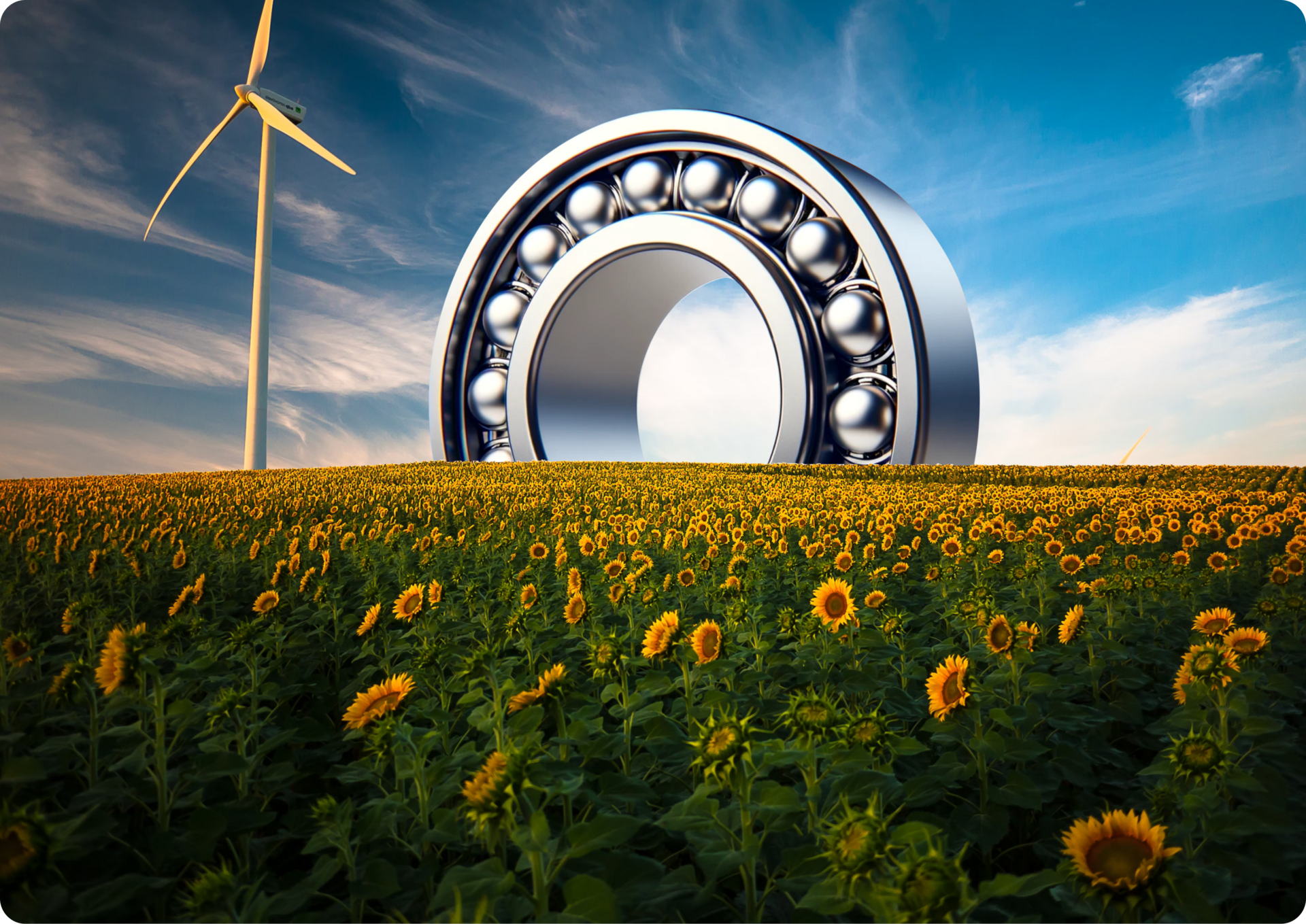In an era in which the call for sustainability and environmental protection is louder than ever, industry is also facing the challenge of minimizing its ecological footprint. One key player in this process is often invisible, but of inestimable importance: the roller bearing. As essential components in almost all industrial applications, from cars to wind turbines, roller bearings play a key role in modern industry. In this article, we explore how bearings can contribute to a greener world by looking at five key aspects of sustainable use.
The path to a greener world starts with production. Innovative manufacturing processes aimed at reducing energy consumption and waste are setting new standards in the bearing industry. Many manufacturers are increasingly turning to environmentally friendly technologies and recycled materials to reduce their ecological footprint. By using renewable energy and minimizing harmful chemicals, bearing manufacturers are moving closer to the goal of sustainable production.
The role of bearings in the green revolution should not be underestimated. They make a decisive contribution in the field of renewable energies in particular. In wind turbines, specialized roller bearings ensure that the turbines function efficiently and reliably. They also play an important role in hydroelectric power plants and solar energy systems. The increasing demand for such specialized bearings reflects the global trend towards a more sustainable energy supply. This development is challenging the industry to develop ever more innovative solutions that meet the specific requirements of renewable energy technologies. By developing and using high-performance bearings specifically designed for these applications, manufacturers are making a direct contribution to the expansion of clean energy sources.
Increased efficiency and durability are key elements of sustainable industrial products. Roller bearings play a central role in this by reducing the energy consumption of machines and extending their service life. Advances in technology, such as predictive maintenance, make it possible to monitor the condition of roller bearings in real time. This not only leads to a more efficient use of resources, but also avoids unnecessary maintenance and reduces material wear. Through such innovations, roller bearings help to extend the life cycle of machines and conserve resources.
Another important aspect is the circular economy. The ability to return old bearings and have them recycled creates a closed loop that reduces waste and conserves resources. Some companies already offer all-round services that include the collection and recycling of old bearings. These initiatives help to extend the life cycle of bearings while minimizing the environmental impact. Returning them to the production cycle not only reduces the need for raw materials, but also reduces the environmental impact.
Excursus: SKF as an example
SKF not only considers the entire life cycle of its products. They recondition bearings so that their full service life is restored. They enable the circular use of lubricating oil by removing impurities and thus preventing it from ageing. And last but not least, SKF will produce a spherical roller bearing made from recycled steel that produces 90% fewer emissions.
The future looks promising, with numerous innovations aimed at making roller bearings even more environmentally friendly. Researchers and developers are working on new materials and technologies that improve performance while reducing the environmental footprint. Examples of this include the development of roller bearings made from sustainable materials or the use of advanced coatings that reduce friction and energy consumption. These innovations show that the bearing industry is actively helping to pave the way to a more sustainable and greener world.





